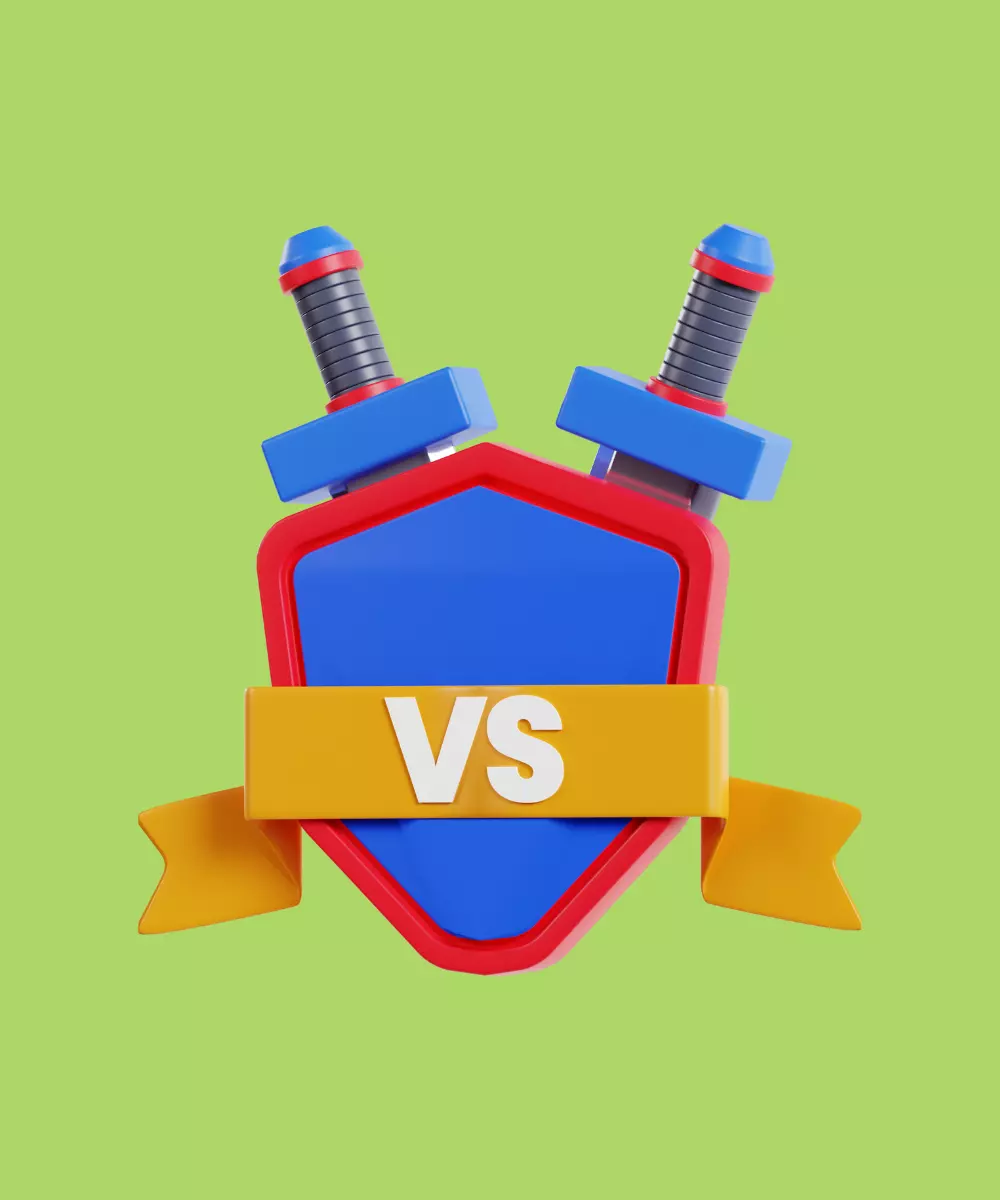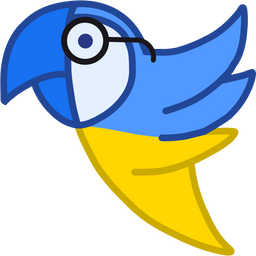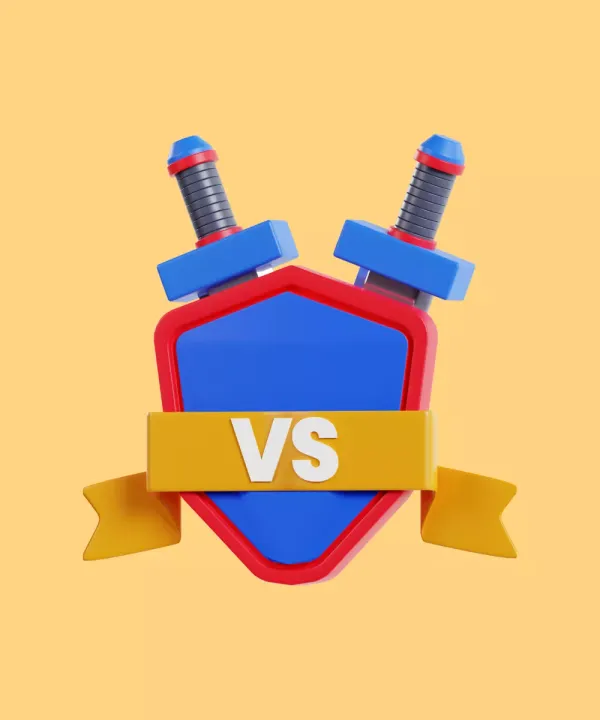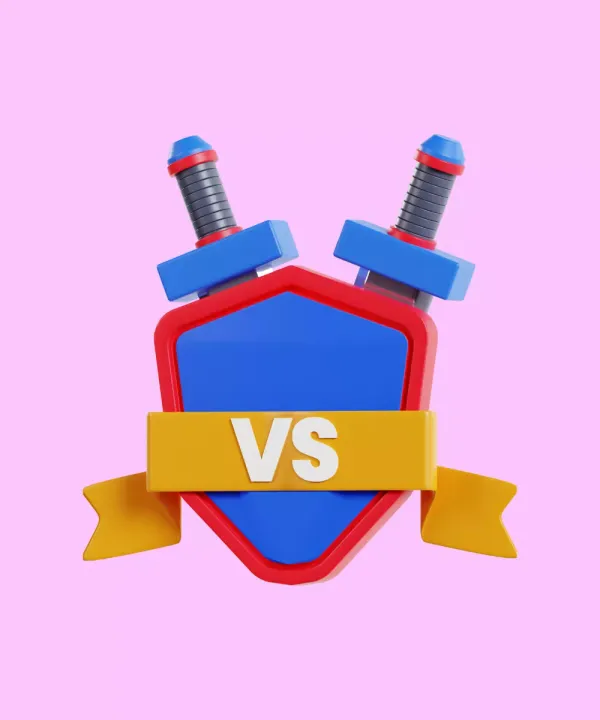When choosing a technology stack for mobile app development, there are several crucial aspects to consider, such as the programming language, cost, community support, and the platform's future prospects. Today, we focus on two popular frameworks for creating top-notch mobile applications: Flutter and Apache Cordova. In this article, we'll delve into a comprehensive comparison of these two technologies, from design to cost and security aspects, to help you make the most informed decision.
Flutter vs. Apache Cordova: SWOT Overview
When comparing development frameworks, it's essential to assess their Strengths, Weaknesses, Opportunities, and Threats (SWOT). This analysis helps highlight each platform's unique offerings and potential challenges.
Flutter: SWOT analysis

Apache Cordova: SWOT analysis
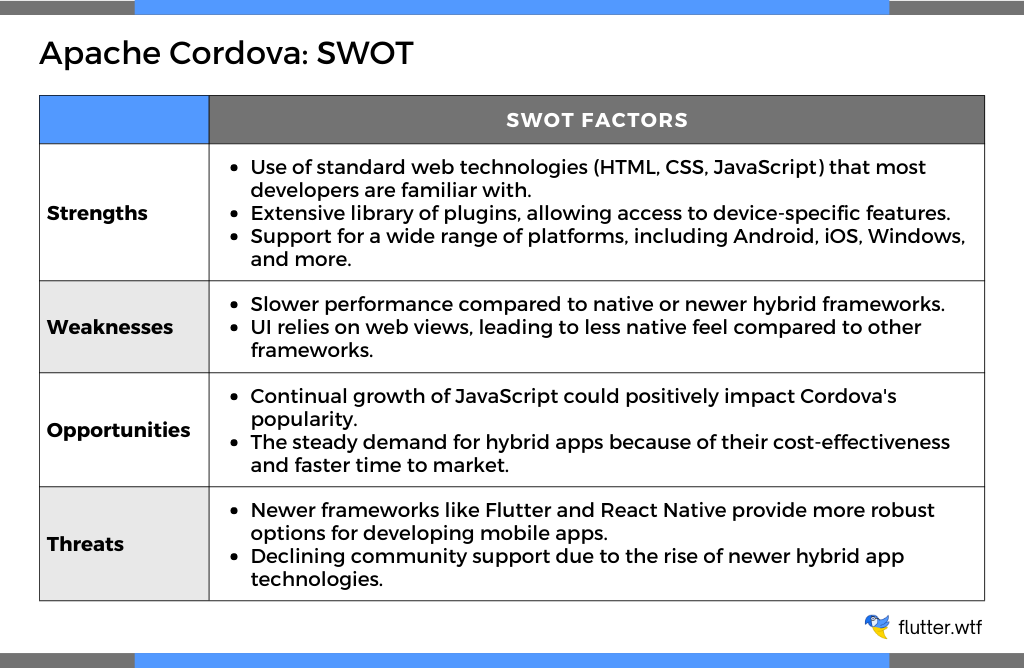
This SWOT analysis should provide a snapshot of the potential each platform offers. Both have unique strengths and opportunities, but also face different challenges. The decision between Flutter and Apache Cordova ultimately depends on your specific project requirements and long-term goals.
Flutter vs. Apache Cordova: Usage, Popularity, and Examples
Usage
Flutter is an open-source UI software development kit created by Google. It's used to develop applications for Android, iOS, Linux, Mac, Windows, Google Fuchsia, and the web from a single codebase. It's known for its rich set of customizable widgets for creating complex, high-performance apps. Flutter's hot-reload feature allows developers to experiment, build UIs, add features, and fix bugs faster.
Apache Cordova, formerly known as PhoneGap, is a mobile application development framework that enables software programmers to build applications for mobile devices using CSS3, HTML5, and JavaScript instead of relying on platform-specific APIs. It wraps your HTML/JavaScript app into a native container which can access the device functions of several platforms. These functions are exposed via a unified JavaScript API, allowing you to easily write one set of code to target nearly every phone or tablet on the market today and publish to their app stores.
To assist in your decision, we have compiled a comparison table, marking a check (√) against the most suitable framework for each particular use case.
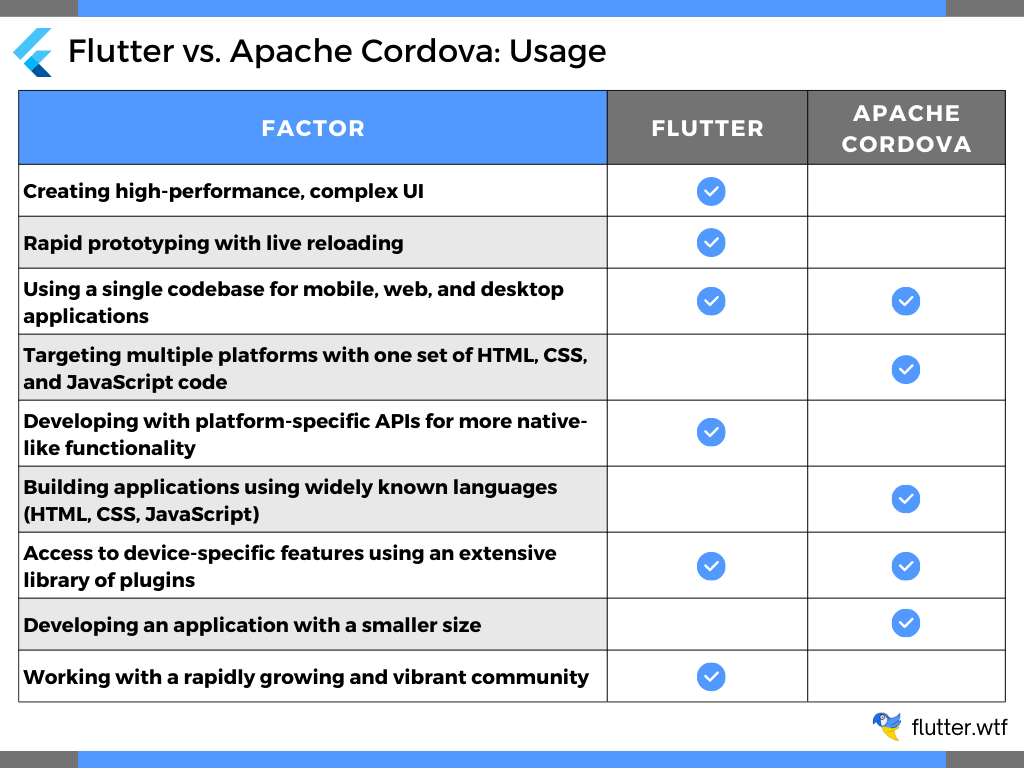
The checkmarks represent the strengths of each framework in their corresponding use cases. However, they don't necessarily indicate that the other framework is unsuitable for that use case. Both frameworks can cater to all these needs, but the efficiency and outcome might differ based on their inherent characteristics. Remember, the best framework for you ultimately depends on your specific project requirements and team expertise.
Popularity
One of the factors to consider when selecting a framework for your mobile app development is its popularity. Popularity might hint at the level of community support you can expect, the number of resources available, and the potential pool of developers.
Introduced by Google in 2017, Flutter has seen rapid growth and is currently one of the most popular frameworks among developers. This can be attributed to Flutter's rich features, its ability to develop cross-platform applications from a single codebase, and the active backing from Google. A growing community of developers, an abundance of learning resources, and regular updates have made Flutter a top choice for mobile application development.
Apache Cordova, originally known as PhoneGap, has been around for a while and enjoyed immense popularity for its ability to build cross-platform mobile apps using familiar web technologies (HTML, CSS, and JavaScript). However, the emergence of newer, more powerful frameworks like Flutter and React Native has somewhat overshadowed Cordova. Despite this, Cordova remains a reliable choice, particularly for developers looking to leverage their existing web development skills in mobile app development.
In conclusion, while both frameworks are popular and capable in their ways, Flutter appears to be gaining the upper hand in terms of growing community support and active development. However, your choice should be guided by your specific project requirements, team's expertise, and long-term considerations rather than just popularity.
Examples
When deciding on a mobile app development framework, real-world examples can offer valuable insights into the framework's capabilities. This article will explore and compare examples of mobile applications developed using Flutter and Apache Cordova, providing a better understanding of what each framework can accomplish.
Flutter has been the framework of choice for various well-known applications due to its versatile and powerful capabilities:
- Google Ads: The Google Ads mobile app helps users view campaign stats, update bids and budgets, get real-time alerts and notifications, and act on suggestions to improve their campaigns.
- Alibaba: The international trade arm of Alibaba.com uses Flutter to empower its business.
- SpaceX app: The super simple and effective SpaceX launcher has also been developed using Flutter. The app aimed to provide a simple and fast SpaceX experience to the users, and Flutter was the best choice.
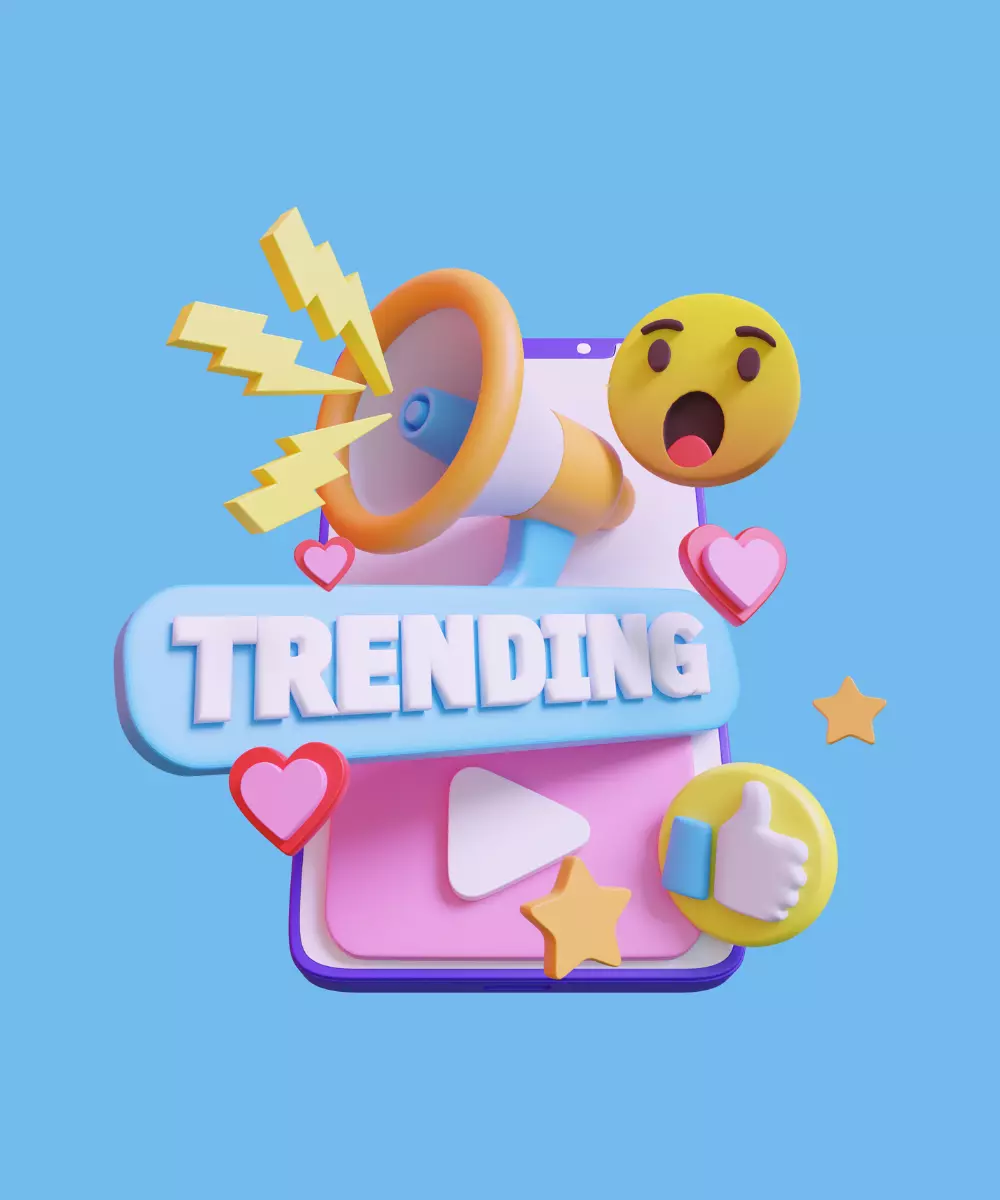
Apache Cordova has also been leveraged by popular applications, particularly those that benefit from its efficient, web-based development approach:
- JustWatch: JustWatch is a streaming search engine that helps to find out where to watch movies and TV shows legally online and in theaters.
- Wikipedia: The official Wikipedia app for mobile devices is developed using Cordova, bringing the wealth of human knowledge to users' fingertips.
- Pacifica: Pacifica is a mindfulness and mental health app built using Cordova.
These examples illustrate the possibilities that both frameworks offer. It's evident that both Flutter and Apache Cordova are capable of supporting complex and popular applications. Your choice should be dictated by your specific project needs, your team's capabilities, and the features you aim to deliver.
Flutter vs. Apache Cordova: Design, UI, and Performance
Design, UI, and performance are vital factors when developing a mobile app, affecting user experience and satisfaction. In this article, we'll discuss these aspects in the context of two prominent app development frameworks: Flutter and Apache Cordova.
Design and UI
Flutter offers a rich set of customizable widgets for creating sophisticated and attractive UIs. Its layered architecture allows for full control over every pixel on the screen, meaning developers can create highly customizable and complex designs. Widgets provided for Material Design (Google) and Cupertino (Apple) make it easy to emulate the native design language of different platforms.
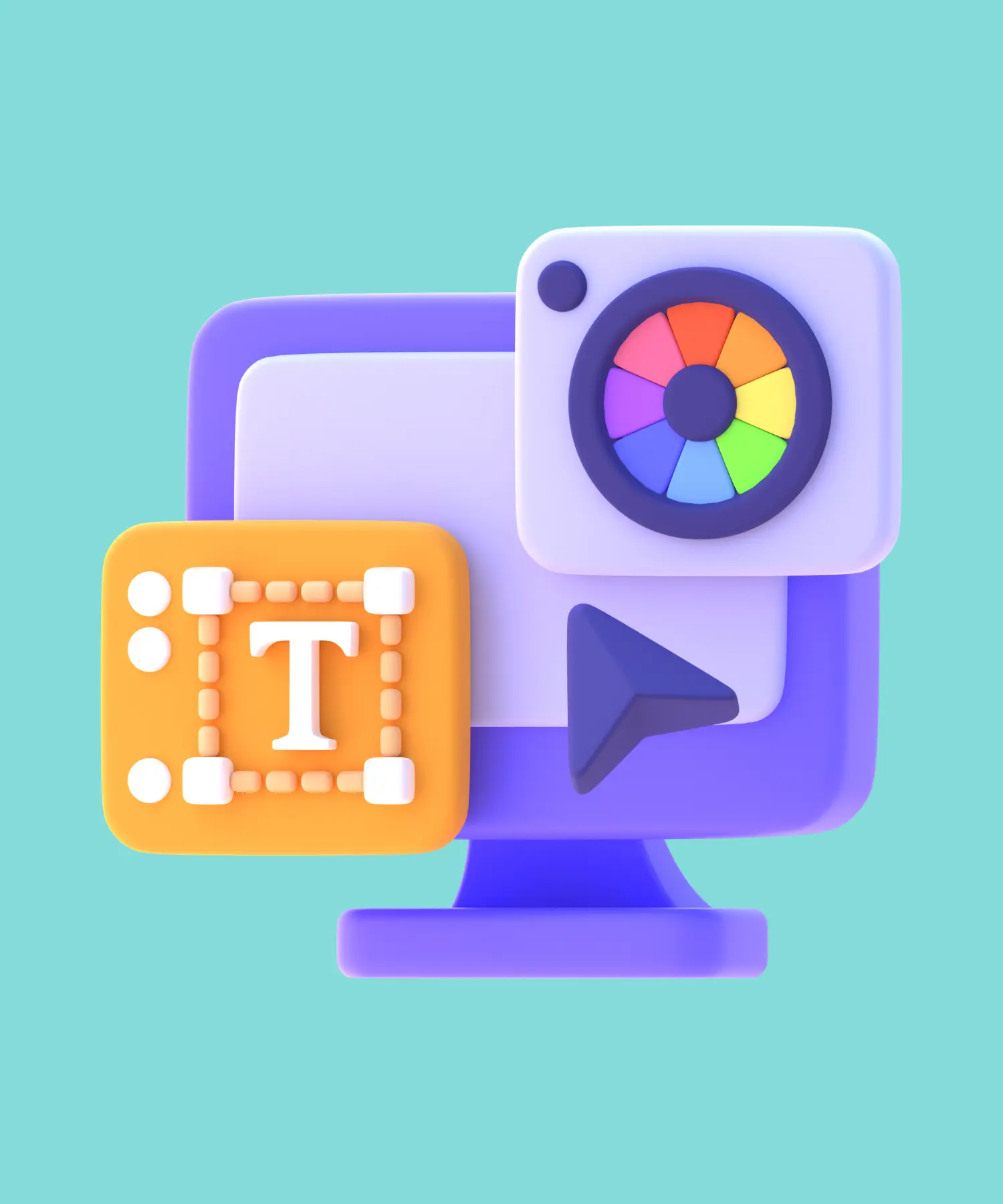
Apache Cordova's approach to design and UI is different from Flutter’s. It allows developers to build UIs using familiar web technologies - HTML, CSS, and JavaScript. While this provides flexibility and ease for developers, Cordova apps may not have the same native feel as Flutter, as UI is rendered using WebView.
Here is a comparison table summarizing the design and UI capabilities of both frameworks:
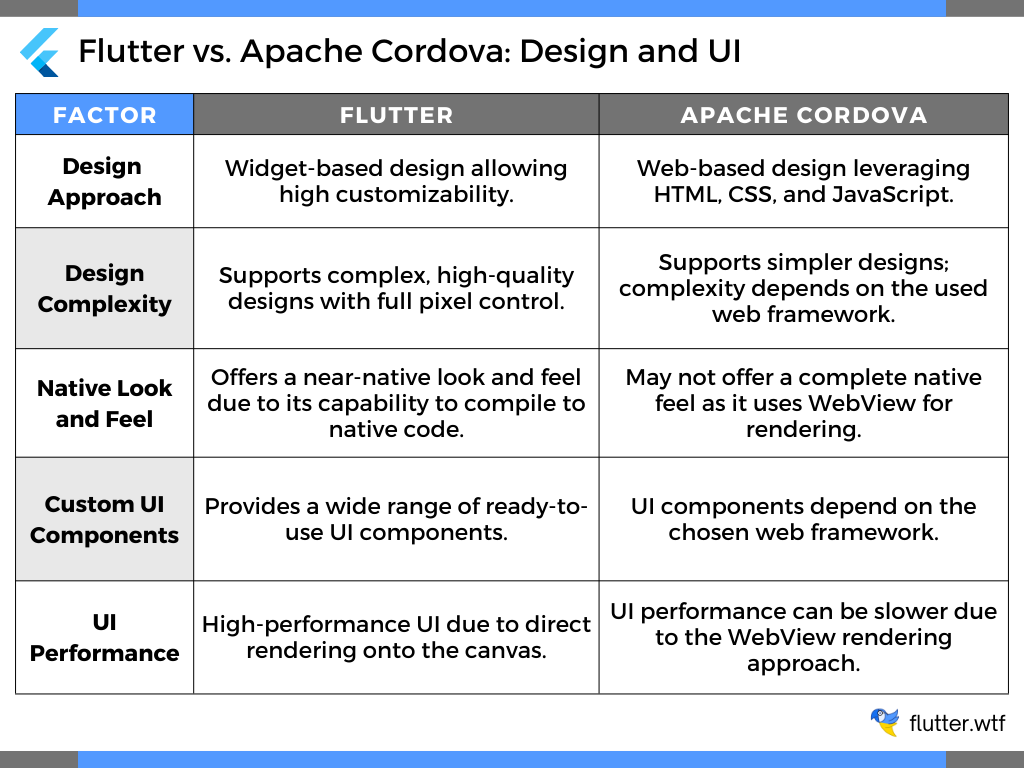
Performance
Flutter's performance is exceptional due to its ability to directly compile to native ARM code for both Android and iOS. This results in fast startup times and fewer performance issues in general. The 'hot reload' feature allows developers to see changes in real time, contributing to faster development and more fluid UI.
In terms of performance, Cordova may not match Flutter. Since Cordova apps are essentially web apps rendered inside a native container, they may suffer from slower performance compared to truly native apps.
Here's a comparative table outlining the performance capabilities of both Flutter and Apache Cordova:
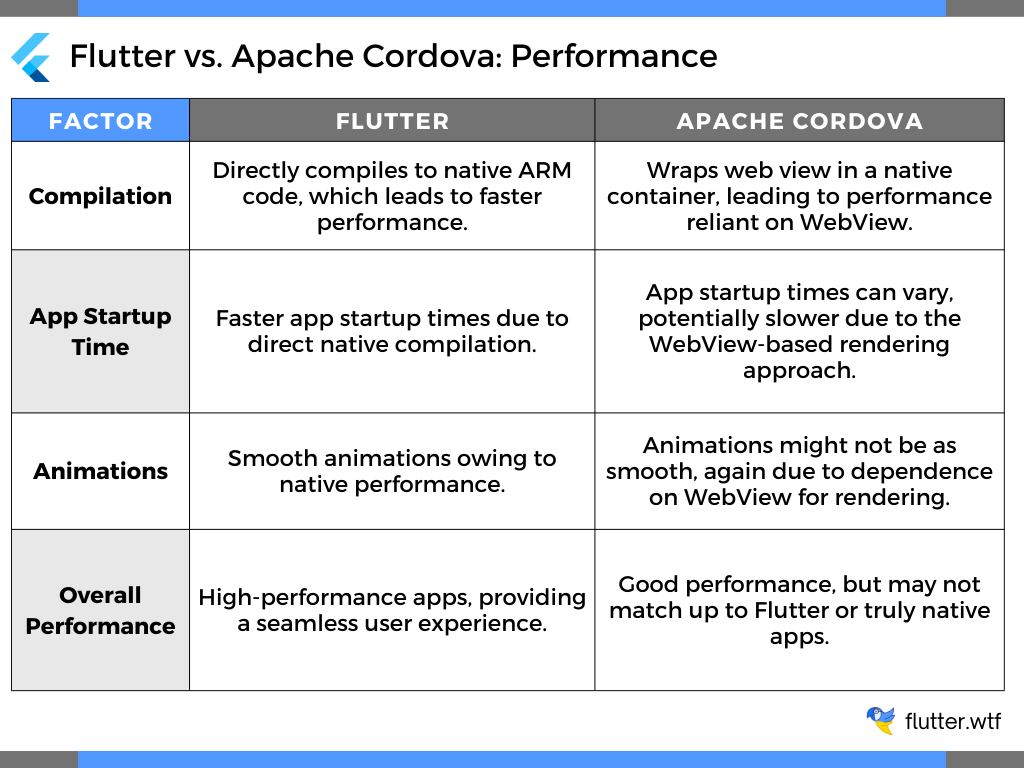
In conclusion, while both frameworks are capable of building functional and effective apps, if performance is a key factor for your app, Flutter would likely be the more suitable choice. However, your final decision should consider other factors like your team's expertise, project requirements, and the intended app functionality.
Device access and API
Access to device-specific features and APIs is another critical aspect to consider when comparing mobile app development frameworks. Let's examine how Flutter and Apache Cordova fare in these areas:
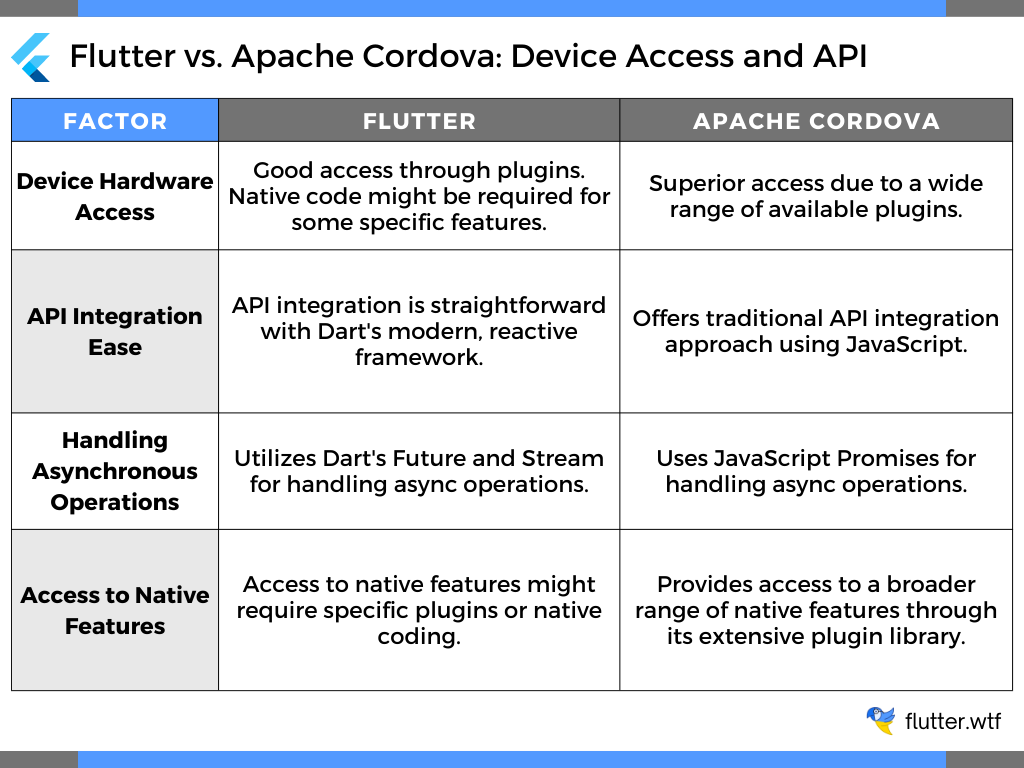
Both frameworks offer efficient ways to interact with device hardware and external APIs. Flutter might require writing native code for certain device features if no plugin is available, while Cordova's vast plugin library covers many device features. In terms of API usage, both use asynchronous operations (Future and Stream in Flutter, Promises in Cordova) to handle data. Your choice should be based on the specific requirements of your project and the expertise of your development team.
Flutter vs. Apache Cordova: Security Aspects
Security is paramount in mobile app development. Both Flutter and Apache Cordova have robust security features.
Flutter provides secure data storage, secure networking, and access to native security features. Apache Cordova also offers secure storage and uses web standards to ensure application security. However, given that Flutter apps are compiled to native code, they may be less prone to certain types of attacks than Cordova apps, which use WebView for rendering.
Let's compare the security capabilities of Flutter and Apache Cordova:
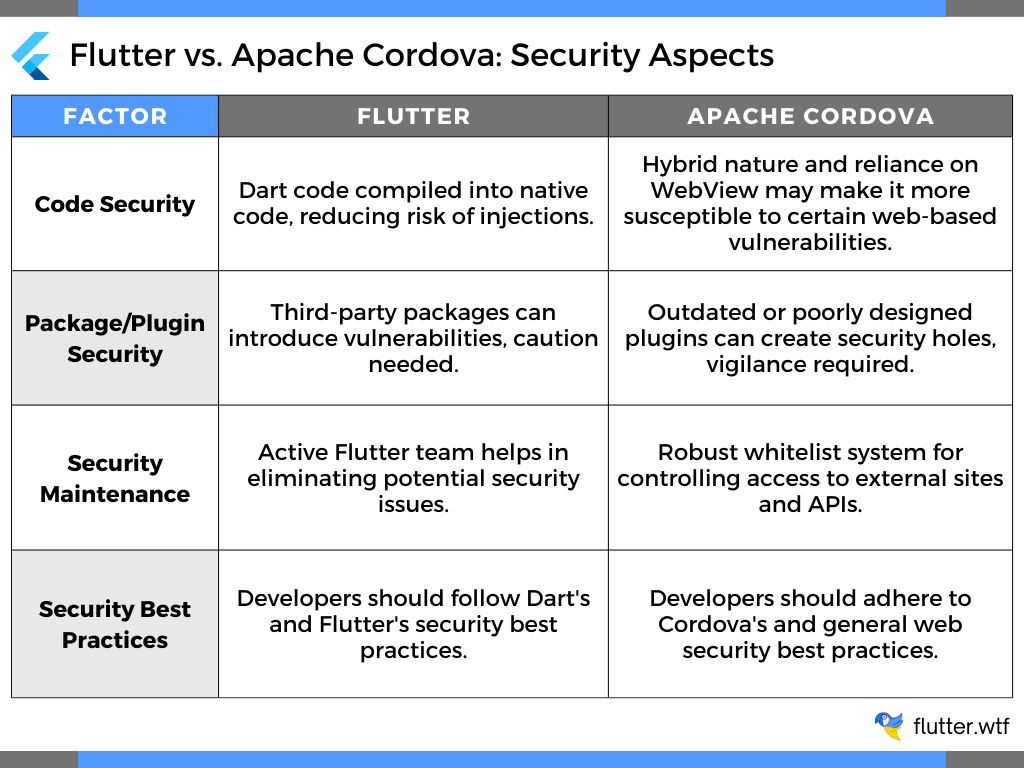
The security capabilities of both Flutter and Apache Cordova are adequate for developing secure apps. However, like with all development, special care must be taken when choosing third-party plugins or packages, as these can introduce vulnerabilities. Developers must also follow best practices for secure coding to ensure application safety.
Flutter vs. Apache Cordova: Testing and Development Speed
Flutter shines in terms of testing, providing a rich set of testing features at different levels (unit, widget, integration). It's also known for its hot-reload feature, which enhances development speed by allowing developers to see changes in real time.
Apache Cordova, while offering easy-to-use testing frameworks, may require more time due to the slower speed of hybrid apps. Additionally, testing might be more complex because the app needs to perform well in different web environments.
Let's compare Flutter and Apache Cordova based on their capabilities for testing and development speed:
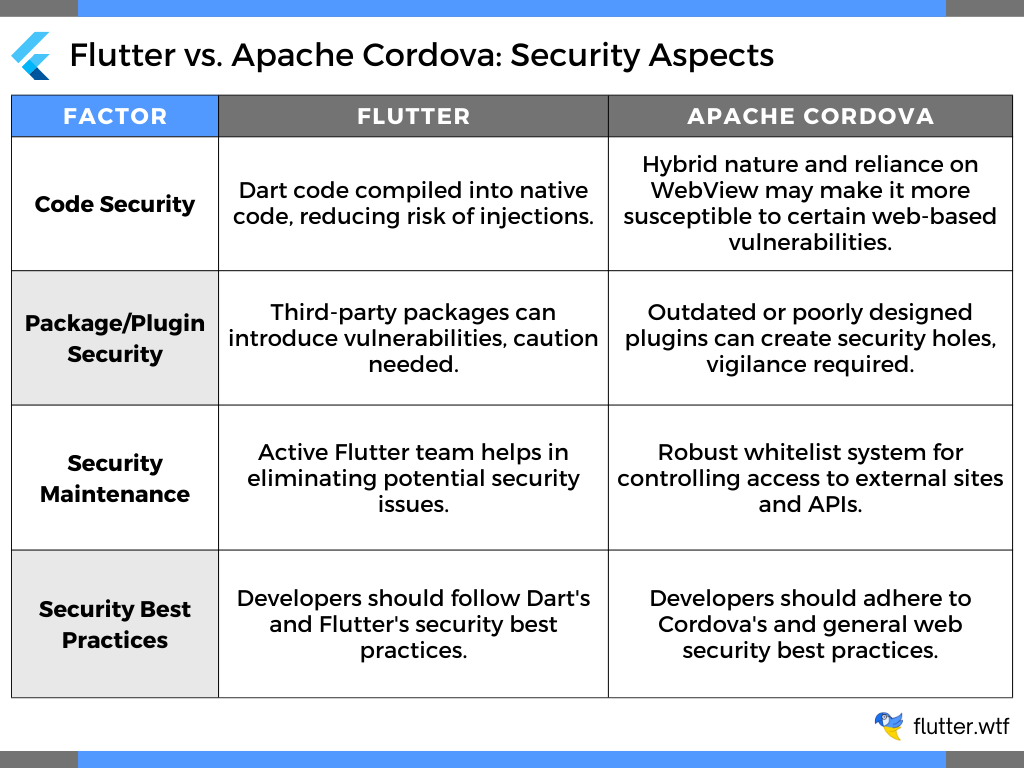
Both Flutter and Apache Cordova offer unique benefits in terms of testing and development speed. Your choice between these two should be guided by your specific requirements, the complexity of the app, and the proficiency level of your development team in the respective frameworks.
Flutter vs. Apache Cordova: Ecosystem
The community and ecosystem around a technology can often make or break the development experience. Flutter, being a Google product, enjoys a growing and vibrant community, numerous packages, and robust development tools.
Apache Cordova, on the other hand, despite having an established ecosystem and a wide array of plugins, has seen a decline in its community support due to the advent of newer hybrid technologies.
Let's compare the ecosystems of Flutter and Apache Cordova:
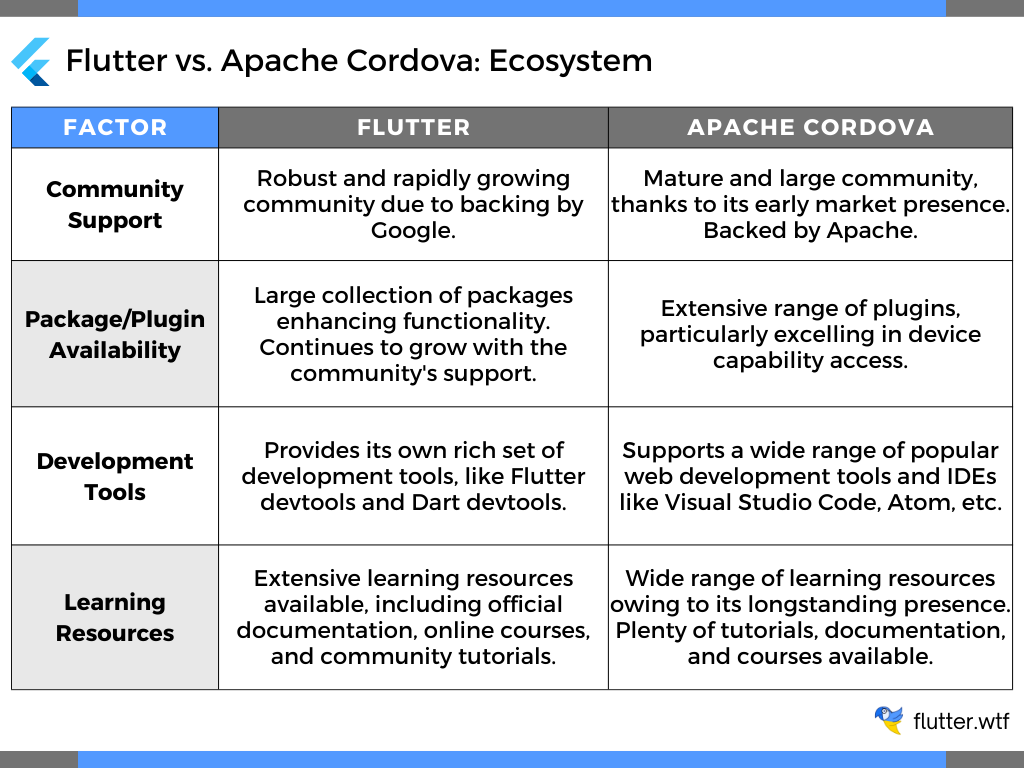
This table provides a comparison of the Flutter and Apache Cordova ecosystems, including community support, availability of packages/plugins, and development tools. Both ecosystems have their strengths and are continuously growing and improving. The choice between these two would depend on your specific needs and preferences.
Flutter vs. Apache Cordova: Development Cost
Cost is always a significant factor in choosing a technology. Apache Cordova may require less cost due to the extensive use of web technologies. On the other hand, Flutter, with its unique language (Dart) and focus on graphics and animations, may need more resources for mastering, thus driving up development costs.

Here's how Flutter and Apache Cordova compare in terms of development cost:

Both frameworks offer cost-effective solutions for cross-platform app development, but the total cost will depend on several factors, including app complexity, team expertise, and the need for platform-specific features.
Flutter vs. Apache Cordova: Learning Ease
Apache Cordova has a lower learning curve as it employs widely-used web technologies. Conversely, Flutter requires learning Dart, which is less commonly used and can therefore pose a challenge to developers new to the framework.
Let's compare the learning ease of both Flutter and Apache Cordova:
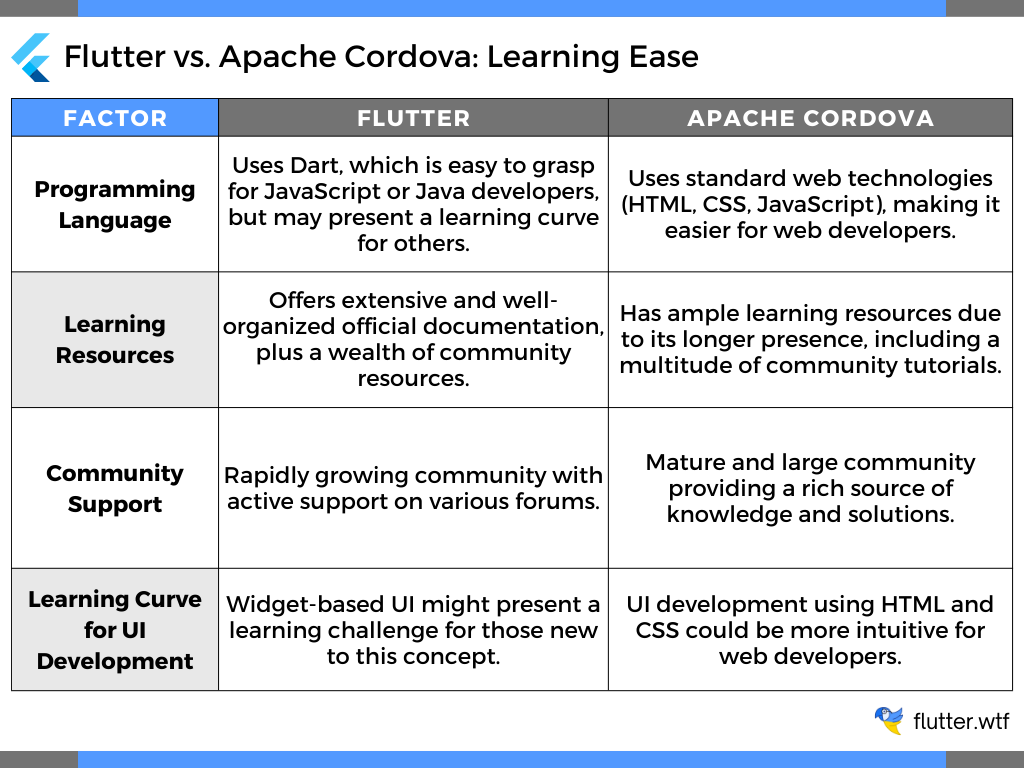
In terms of learning ease, both frameworks have their strengths. Apache Cordova could be easier for web developers to pick up, while Flutter might be easier for developers familiar with JavaScript or Java. The choice between the two would depend on your development team's background and the project requirements.
Flutter vs. Apache Cordova: Future Prospects
Flutter has a promising future, with continued backing by Google and increasing interest in the Dart language. Apache Cordova, while still useful for creating quick and easy cross-platform apps, faces fierce competition from newer frameworks, which may influence its future growth.
Here is a comparison table summarizing their future prospects:
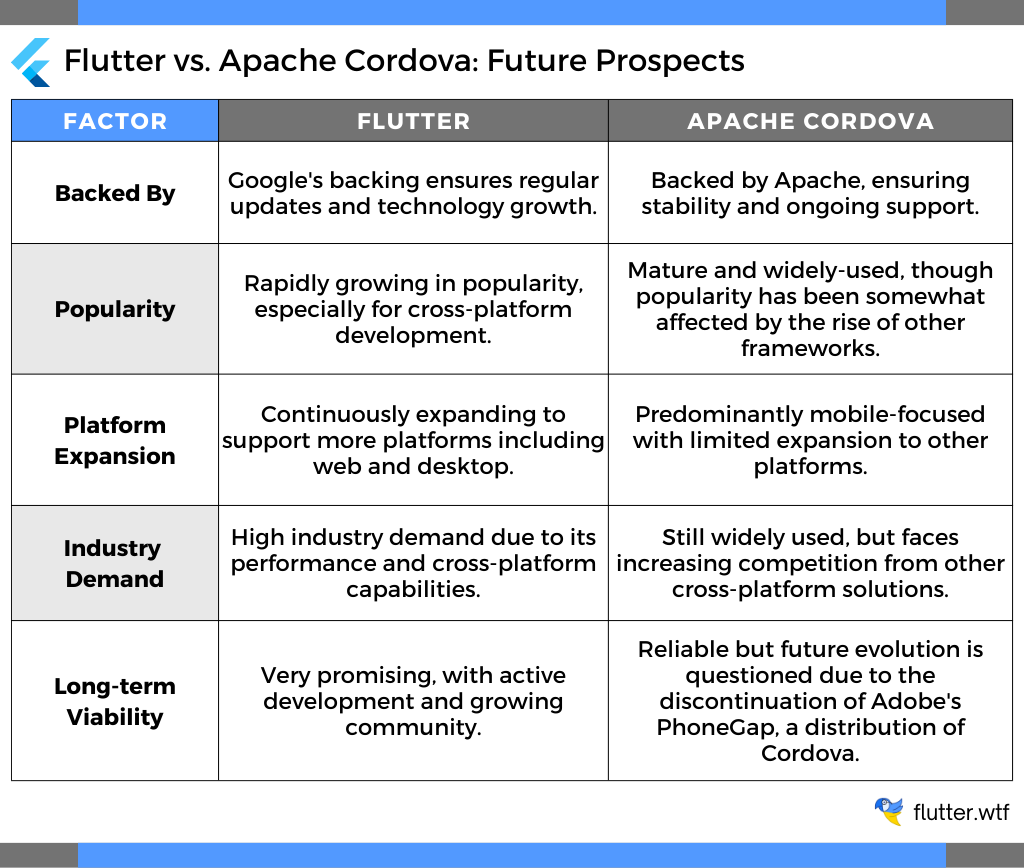
In conclusion, both Flutter and Apache Cordova have their strengths and potential challenges. Your choice should take into account the future direction of these frameworks and how well they align with your long-term development needs.
Conclusion
In the battle of Flutter vs. Apache Cordova, the decision ultimately lies with your specific needs, budget, and future outlook. If your priority is performance and design, or if you’re keen on native-like experience, Flutter is your go-to choice. However, if you're looking for a framework that leverages web technologies and offers quick development, Apache Cordova would suit you well. It’s all about finding the right tool for the job.
Remember, the choice of platform is crucial to the success of your app. Thoroughly consider all the factors before making a decision. If you need any further assistance, feel free to reach out to our team at What the Flutter. We're here to guide you on your app development journey!


